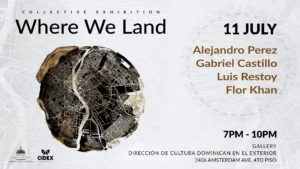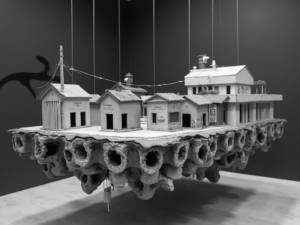As I delved into the work of Bill Viola, a sense of anticipation enveloped me. I had always admired his innovative approach to video art, but experiencing his installations in person is something uniquely filled with an atmosphere almost imbued with calm, as if time stood still upon crossing the threshold.
From the very first moment, I was struck by how Viola uses video not just as a medium but as a vehicle to explore the dimensions of human experience. His works are deeply reflective, addressing themes of life, death, and spirituality. In one corner, a projection showed a man slowly emerging from the water, his movements almost hypnotic. Watching him, I felt transported to a meditative state. It was as if each drop falling from his body told a story of rebirth.
Born in 1951 in New York, Viola began his career in the 1970s, at a time when video art was still in its early stages of development. His background in painting and music allowed him to experiment with visual narrative in ways that few artists had attempted before. As I explored his life, I was fascinated to learn that he had traveled the world, studying spirituality and meditation across various cultures. This quest is reflected in his work, where influences from Eastern traditions and Western aesthetics intertwine poetically.
As I became more familiar with his pieces, I encountered one of his most emblematic works, “The Crossing.” In this installation, a man appears to be in a trance while images of fire and water envelop him. The tension between these two opposing elements prompted me to reflect on the duality of existence. How do we find balance between life and death? What role does suffering play in our journey? Viola’s emotional depth led me to question my own experiences and the narratives we construct around them.
What has impacted me the most is Viola’s ability to create spaces that invite contemplation. In a world saturated with stimuli, his works offer a respite, a refuge where we can reflect on what is essential. In one of his more recent pieces, I sat in front of a projection showing people in moments of vulnerability, such as crying or embracing. The way Viola captures these intimate moments reminded me of the beauty found in human fragility.
During my visit, I was also impressed by how his works address the notion of time. In “Martyrs,” for example, Viola presents several characters in situations of suffering, but instead of focusing on tragedy, there is a sense of transformation. Each image seems to transcend time, challenging our perception of the ephemeral. In that moment, I understood that his art not only seeks to represent life but invites viewers to engage with it on a deeper level.
Each time I leave a room featuring one of his works, I carry a sense of awe with me. Bill Viola’s work is not merely an exploration of video art; it is a journey toward introspection and human connection. His ability to capture the intangible reminds me that, amid our routines and distractions, there is always space for reflection and wonder.
Viola taught me that art has the power to touch our souls, to make us feel more alive. In a world that often feels overwhelming, his work is a beacon guiding us toward what truly matters. That night, as I reflected on the experience, I realized that Bill Viola’s art transcends time and space, resonating deep within our being.









